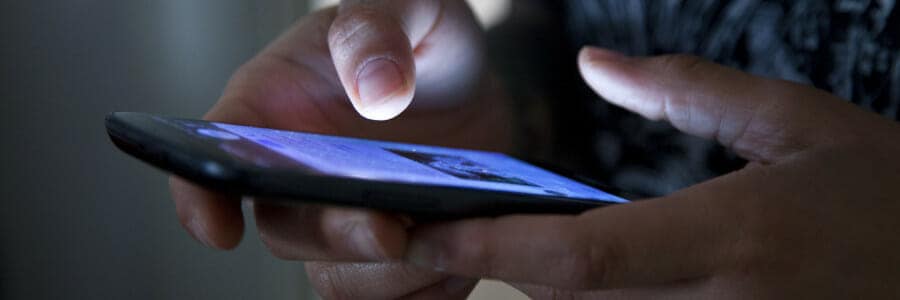Text Messaging: Evolution, Functionality, and Cultural Impact
Text messaging, commonly known as texting, is the exchange of short written messages between mobile devices, including cell phones, tablets, and computers. Initially introduced as a simple method of communication, texting has evolved into a global phenomenon that spans personal, professional, and commercial interactions. The convenience, speed, and accessibility of texting make it one of the most widely used communication tools today.
This article delves into how text messaging works, its history, its impact on communication, advancements beyond SMS, and the challenges and concerns associated with its widespread adoption.
How Text Messaging Works
Text messaging relies on cellular networks to transmit messages in the form of Short Message Service (SMS) or Multimedia Messaging Service (MMS). Unlike emails or internet-based messaging apps, SMS operates directly through a mobile carrier’s infrastructure, ensuring that messages are delivered even in areas with weak internet connectivity.
Here’s how a basic SMS message works:
- Message Creation: A user types a short text (up to 160 characters) on their mobile device.
- Message Routing: The message is sent from the sender’s mobile device to the nearest cell tower, which forwards it to the Short Message Service Center (SMSC).
- Storage and Forwarding: If the recipient’s phone is available, the message is immediately delivered. If not, the SMSC temporarily stores the message until the recipient’s device can receive it.
- Message Delivery: The message is transmitted to the recipient’s phone via their nearest cell tower, allowing for seamless communication.
For messages containing images, videos, or audio files, Multimedia Messaging Service (MMS) is used. MMS operates similarly to SMS but requires a mobile data connection or Wi-Fi for transmission. Unlike SMS, which is text-based, MMS allows for richer communication by supporting multimedia content.
With advancements in mobile networks and internet connectivity, Rich Communication Services (RCS) is gradually replacing SMS and MMS by offering features like read receipts, typing indicators, and high-quality media sharing.
A Brief History of Text Messaging
The origins of text messaging can be traced back to the early 1980s, when engineers developed a method to send short data messages over mobile networks. Here are some key milestones in its evolution:
- 1984 – SMS was conceptualized by Friedhelm Hillebrand and Bernard Ghillebaert as part of the Global System for Mobile Communications (GSM) project.
- 1992 – The first text message, “Merry Christmas,” was sent by Neil Papworth from a computer to a mobile phone using Vodafone’s network.
- 1994 – Nokia introduced the first mobile phone capable of sending SMS messages, making texting more accessible to the public.
- 1999 – Cross-network texting became available, allowing users to send messages between different mobile carriers.
- 2000s – SMS became a dominant form of communication, with texting surpassing phone calls as the preferred way to interact.
- 2010s-Present – The rise of messaging apps like WhatsApp, iMessage, and Facebook Messenger introduced internet-based texting alternatives, reducing reliance on traditional SMS.
Despite the rise of instant messaging apps, SMS remains relevant for businesses, security verifications, and emergency alerts due to its reliability and wide reach.
The Impact of Text Messaging on Communication
Text messaging has profoundly influenced language, communication habits, and social interactions. Its impact is evident in various aspects of modern life:
1. The Evolution of Language and Texting Slang
Texting has led to the development of shorthand language, abbreviations, and emojis to convey thoughts quickly. Examples include:
- “LOL” (Laugh Out Loud)
- “BRB” (Be Right Back)
- “TTYL” (Talk to You Later)
- “OMG” (Oh My God)
Additionally, emojis and GIFs have replaced traditional text responses, making conversations more expressive and engaging.
2. The Role of Texting in Business and Marketing
Companies leverage SMS for:
- Customer service (e.g., appointment reminders, delivery updates)
- Marketing campaigns (e.g., promotions, discounts)
- Security measures (e.g., two-factor authentication codes)
Studies show that SMS marketing has a 98% open rate, making it one of the most effective tools for reaching consumers directly.
3. Texting and Its Social Influence
Texting has reshaped the way people interact socially. It has:
- Increased convenience – People can communicate instantly without the need for a phone call.
- Changed dating and relationships – Text-based communication has become a primary mode of interaction for couples.
- Led to misinterpretations – Unlike face-to-face conversations, texting lacks tone and body language, leading to misunderstandings.
While texting enhances convenience, it also poses challenges in maintaining deep, meaningful connections compared to verbal or face-to-face interactions.
Advancements Beyond SMS: The Rise of Instant Messaging Apps
With the evolution of smartphones and internet-based communication, instant messaging apps have become the preferred choice for texting. These apps offer enhanced features beyond SMS, including:
- WhatsApp, iMessage, Facebook Messenger, Telegram, and Signal – Provide encrypted messaging for enhanced security.
- RCS (Rich Communication Services) – Aims to replace SMS/MMS with features like read receipts, group chats, and high-quality media sharing.
The shift from carrier-based SMS to internet-based messaging has led to:
- Lower costs (no SMS charges)
- Better user experience (richer content, interactive features)
- Improved security (end-to-end encryption)
Despite these improvements, SMS remains vital in areas with poor internet connectivity, ensuring communication is accessible to all.
Challenges and Concerns Associated with Text Messaging
While texting is convenient, it also comes with risks and challenges:
1. Texting While Driving: A Major Safety Concern
- Distracted driving due to texting has led to increased road accidents.
- Many countries have enforced strict penalties for texting while driving.
2. Cybersecurity Risks: Phishing and SMS Scams
- Smishing (SMS phishing) attacks trick users into clicking malicious links.
- Spoofed messages impersonate banks or government agencies, leading to fraud.
3. Privacy Issues and Data Security
- SMS is not encrypted, making it vulnerable to interception.
- Messaging apps like WhatsApp and Signal provide end-to-end encryption, ensuring privacy.
4. Digital Overload and Mental Health Impact
- Constant notifications and messages contribute to stress and anxiety.
- The need for instant replies can create pressure in personal and professional relationships.
Despite these concerns, adopting responsible texting habits and using secure messaging platforms can mitigate risks.
The Future of Text Messaging
As technology advances, the future of text messaging will likely involve:
- Greater Adoption of RCS – A richer messaging experience to replace SMS/MMS.
- AI and Automation – Chatbots for customer service and AI-generated replies.
- Stronger Security Measures – Advanced encryption for SMS and messaging apps.
- Integration with IoT Devices – Smart home devices using SMS for alerts and commands.
While instant messaging apps dominate personal conversations, SMS will remain a critical tool for business communication, emergency alerts, and authentication services.
Conclusion
Text messaging has come a long way from its early days as a 160-character communication tool to becoming a global standard for both personal and business communication.
Despite the emergence of internet-based messaging, SMS continues to play a vital role in modern communication due to its reliability, accessibility, and widespread adoption.
As technology progresses, texting will continue to evolve, integrating AI, encryption, and automation to provide a safer, smarter, and more efficient communication experience for users worldwide.













